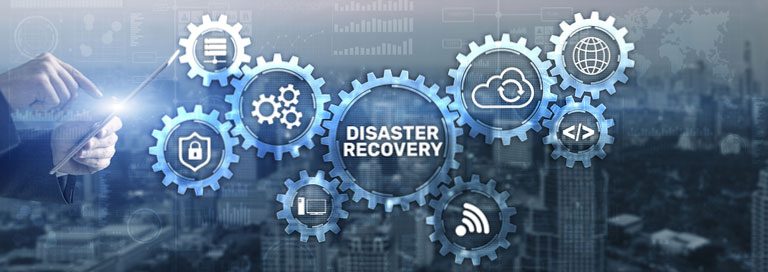DR-as-a-Service provides infrastructure, processes and expertise in a subscription-based model.
Organizations depend upon the around-the-clock availability of mission-critical IT systems — and that creates tremendous risk to the business. Disasters can and will occur, whether caused by human error, power interruptions, fire, water damage or weather-related events. The disruption to operations can be devastating.
According to the Uptime Institute’s Annual Outage Analysis 2023, 70 percent of data center outages cost $100,000 or more, with 25 percent costing more than $1 million. Outages are taking longer to resolve, which leads to increasing costs. While 41 percent of outages were resolved in less than four hours, 16 percent took more than 48 hours to resolve.
Despite the high cost of downtime, many organizations still lack an effective disaster recovery (DR) platform. Traditionally, DR requires investments in an offsite IT infrastructure that sits idle until needed. DR processes are often implemented manually, requiring numerous complex steps to allocate recovery resources, perform system and data recovery, and validate that systems are ready for use.
Those challenges have driven the growing use of DR-as-a-Service (DRaaS) solutions. DRaaS is a cloud model that provides a robust DR platform in a subscription-based offering. Markets and Markets expects the DRaaS market to see a compound annual growth rate of 19.8 percent through 2028.
Removing Overhead, Adding Expertise
Legacy DR solutions require organizations to duplicate the entire production infrastructure and associated operational processes, putting fast and reliable DR out of the reach of all but the largest enterprises. Virtualization reduces the number of servers required for recovery and enables data replication and failover across different types of equipment. However, organizations still must purchase equipment and dedicate IT resources to maintaining that equipment and managing the DR solution.
DRaaS shifts this overhead to a third-party service provider. Organizations don’t have to purchase hardware or software or acquire data center space, making it especially well-suited to organizations that do not have a second data center for DR.
Infrastructure is only part of the picture, however. While organizations can leverage cloud-based Infrastructure-as-a-Service solutions for data synchronization and failover to a third-party DR site, they are still responsible for the operational aspects of DR. DRaaS, in contrast, adds multiple layers of services, including DR planning and testing, real-time data replication, data security, and ongoing management and support.
As with anything delivered “as-a-Service,” customers benefit from the service provider’s economies of scale and specialized expertise. In fact, expertise is one of the primary advantages of DRaaS, particularly for small to midsize businesses (SMBs) that tend to lack in-house capabilities.
Due Diligence
Because everything is handled by the service provider’s specialists, DRaaS increases confidence in DR processes and allows IT resources to be redirected toward other initiatives. DRaaS also enables faster recovery — the service provider should have best practices and experienced personnel who can quickly activate and manage failover and failback processes.
These capabilities vary widely, however, and organizations should do due diligence in selecting a DRaaS provider. Key considerations include recovery point objectives (RPOs), recovery time objectives (RTOs) and SLAs. Organizations in highly regulated industries should look for a provider that stores data only in a Type 2 SSAE 16/SOC 1-certified data center and follows applicable operational standards.
Geographic diversity is also important. Organizations should select a service provider close enough to their production data centers for effective data replication yet far enough away that a regional disaster won’t affect both the production and DR sites. The service provider should have remote access capabilities so that personnel can administer the site if weather, pandemic or other circumstances prevent travel to the data center.
Planning Is Key
Organizations should also use the migration to DRaaS to review their DR plans and ensure they are in close alignment with business objectives. Instead of focusing on protecting individual systems and data, IT teams can work with a knowledgeable DRaaS provider to develop an enterprise-class DR plan that considers critical dependencies within the environment.
Traditional DR models won’t meet today’s demanding business and regulatory requirements. It’s not enough to replicate data and failover servers — organizations need a proactive solution that is always ready when needed and enables the business to continue to operate seamlessly.
For many organizations running applications in a virtual or cloud infrastructure, DRaaS offers an alternative that is less complex, faster to implement and more affordable than traditional DR. It relieves the capital investments and management challenges typically associated with DR while helping to minimize business disruptions.




